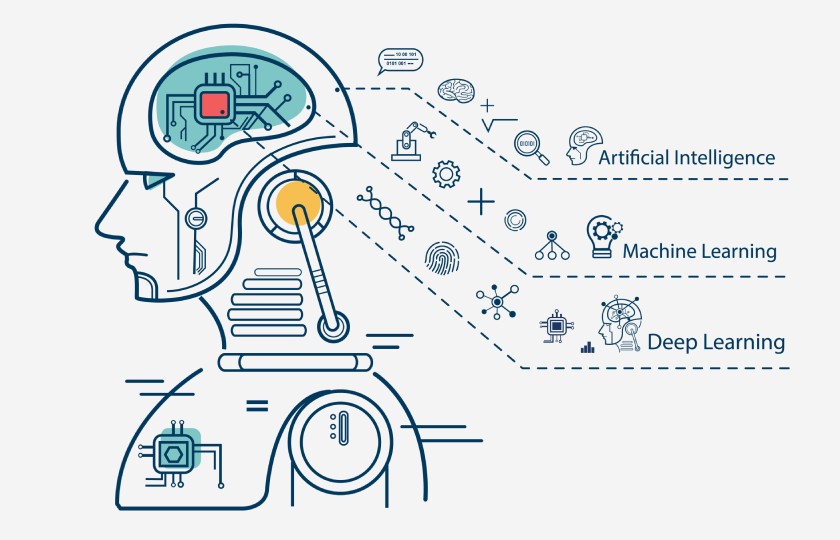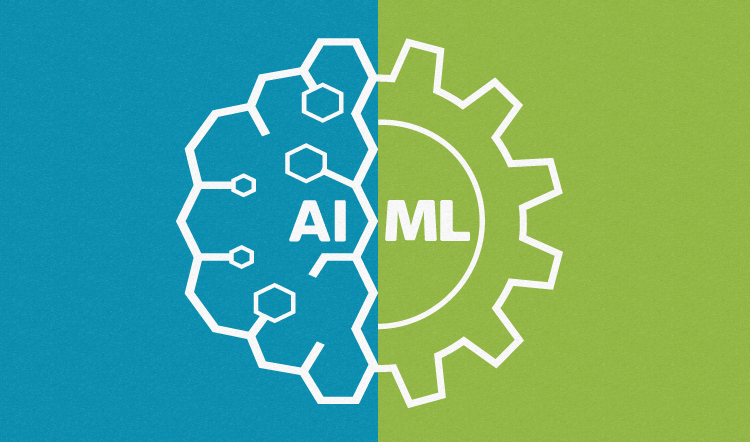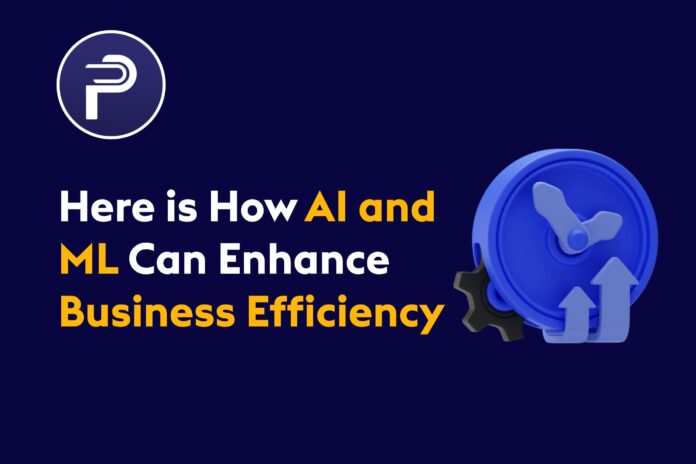Introduction
Efficiency is the primary aim for every contemporary business, whether it’s a fledgling startup or an established corporation. However, achieving seamless operations can pose challenges. Utilizing tools powered by artificial intelligence (AI) and machine learning (ML) streamlines this pursuit. What makes AI and ML indispensable for enhancing your company’s workflow? Simply put, they operate at a pace far surpassing that of the average human brain. In 2022, researchers at MIT reported the development of systems that react one million times faster than human neural networks. Imagine applying this capability to tasks like developing and analyzing multiple spreadsheets. With proper input, such as calculations, an AI-based system effortlessly identifies anomalies and correlations across these spreadsheets. Conversely, an employee might spend days or even weeks sifting through the data to achieve comparable results. Furthermore, integrating ML into the equation enhances the software’s predictive capabilities, enabling you to anticipate trends and stay ahead of the curve.
What is ML?

Machine Learning, often abbreviated as ML, is a subset of artificial intelligence (AI) that focuses on the development of computer algorithms that improve automatically through experience and by the use of data. In simpler terms, machine learning enables computers to learn from data and make decisions or predictions without being explicitly programmed to do so
Where Should You Improve Your Efficiency With AI and ML?

You might be eager to get BEGIN with AI and ML, which is understandable. However, you want your tech investment to offer the strongest possible return on investment (ROI). With that in mind, consider bringing AI and ML into the following areas of your business first. They’re all places that will benefit heavily from an efficiency boost.
Must Read:4 Ways You Can Use Snapchat To Boost Your Sales
1. Recruitment, hiring, and training
When it comes to recruiting individuals for your company, the aim is to ensure a swift and seamless process while selecting candidates likely to excel and remain with the organization. AI and ML can facilitate the identification of suitable candidates for specific roles even before advertising for new openings begins. According to Bryce Murray from Two Story, leveraging behavioral science allows the creation of AI-generated algorithms. For instance, a company seeking general managers can analyze the qualities and traits exhibited by its most successful managers. These benchmark characteristics can then serve as the foundation for AI algorithms to predict candidate success. Additionally, these traits can inform training programs for current managers, helping them reach their full potential. Murray’s insights underscore how AI enhances efficiency in personnel and human resources management through expedited selection processes, tailored interview questions based on job requirements, and targeted training programs that enable immediate application of acquired knowledge.
2. Marketing, branding, and sales
According to a recent report by Capgemini, only 11% of marketers are effectively utilizing data, indicating a vast reservoir of untapped data within most companies. Incorporating one or more AI products into your marketing communications (Marcom) stack can unleash the potential of your data. While marketing, branding, advertising, and sales involve numerous complexities, AI or ML integration doesn’t have to encompass every aspect simultaneously. Taking a small step forward, such as leveraging AI to enhance personalization, serves as a practical starting point. Consumers increasingly demand personalized interactions with companies, yet dedicating extensive time to personalizing content poses challenges for marketers and salespeople. AI products address this issue by autonomously enhancing personalization. By analyzing data across multiple platforms, AI software enhances engagements, making them feel more tailored and individualized. ML further enhances this experience by anticipating consumer needs, based on insights gathered from their interactions. For example, AI technology can examine the paths taken by previous customers through your sales funnel and deliver personalized content to guide new leads efficiently, all without human intervention.
3. Support, service, and assistance
Irrespective of the product or service you offer, providing support to customers and clients is always essential. However, assisting buyers can consume considerable amounts of time. This is why many organizations have implemented AI chatbots. Unlike humans, chatbots operate continuously without fatigue, serving as efficient points of contact and directing users to self-service options when appropriate.
Although chatbots represent just one aspect of AI integration in customer and client support, AI also serves as an invaluable assistant to service representatives. AI software can monitor service calls and provide relevant information to representatives in real-time. For instance, during a call with a customer inquiring about a delayed shipment, the AI tool can automatically retrieve the customer’s details based on their name. This eliminates the need for representatives to navigate through multiple pages or input data manually, saving time and streamlining the support process. With AI assistance, customer service representatives can effectively address customer inquiries and enhance satisfaction more promptly.
4. Payroll and vendor invoice fulfillment
Numerous conventional back-office and administrative tasks stand to benefit significantly from the integration of AI and ML technologies. Among these, payroll management emerges as a primary focus, given its critical nature. While manual payroll processing may suffice in the initial stages of business, its efficiency diminishes as the workforce expands. Over time, the manual approach can lead to unnecessary time spent on verification tasks.
Automating payroll through an AI-driven system presents a logical solution, relieving employees of cumbersome computations. Moreover, such systems ensure the maintenance of meticulous records, accessible at any time, alleviating concerns about payroll information availability. Depending on the chosen payroll partner, employees may gain access to their accounts, eliminating the need to request duplicates of documents like paystubs.
Similarly, vendor invoice processing represents another area ripe for AI and ML integration. Manual processing increases the risk of overlooking discrepancies or instances of fraud. Advanced systems equipped with AI can swiftly identify issues such as duplicate bills, thus preventing overpayment errors. By leveraging technology, businesses can streamline payment processes, fostering vendor satisfaction, and minimizing errors, consequently enhancing overall operational efficiency.
Conclusion
The integration of artificial intelligence (AI) and machine learning (ML) technologies presents immense opportunities for boosting business efficiency across various domains. From streamlining administrative tasks like payroll management and vendor invoice processing to revolutionizing customer support through AI chatbots, these technologies offer automation, accuracy, and scalability. By leveraging AI and ML, businesses can optimize operations, minimize errors, and maximize productivity, ultimately driving growth and competitiveness in today’s dynamic marketplace. Embracing these transformative technologies empowers organizations to stay ahead of the curve, adapt to evolving consumer demands, and unlock new avenues for innovation and success.

